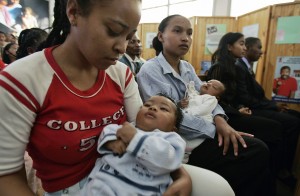
Child mortality rates have plummeted to less than half of what they were in 1990, according to a new report http://www.who.int/mediacentre/news/releases/2015/child-mortality-report/en/ released by the UN and partner organisations on Sep 9th. Under-five deaths have dropped from 12.7 million per year in 1990 to 5.9 million in 2015. This is the first year the figure has gone below the 6 million mark.
Nevertheless, 16 000 children under 5 still die every day. And the reduction in under-five mortality is not enough to meet the Millennium Development Goal of a two-thirds reduction between 1990 and 2015.
The report highlights that a child’s chance of survival is still vastly different based on where he or she is born. Sub-Saharan Africa has the highest under-five mortality rate in the world with 1 child in 12 dying before his or her fifth birthday – more than 12 times higher than the 1 in 147 average in high-income countries.
The report notes that the biggest challenge remains in the period at or around birth, with almost half of under-five deaths occurring in the first 28 days of life. Nearly half of all under-five deaths are also associated with undernutrition.
The 2030 Agenda for Sustainable Development is due for consideration and adoption at the 68th session of the UN General Assembly later this month. One of the Sustainable Development Goals (SDGs),Goal 3 aims to’ Ensure healthy lives and promote well-being for all at all ages’. One of the indicators for monitoring the implementation of that goal is’ By 2030, end preventable deaths of newborns and children under 5 years of age’
As most child deaths are easily preventable by proven and readily available interventions, this target is clearly achievable with the necessary political will.